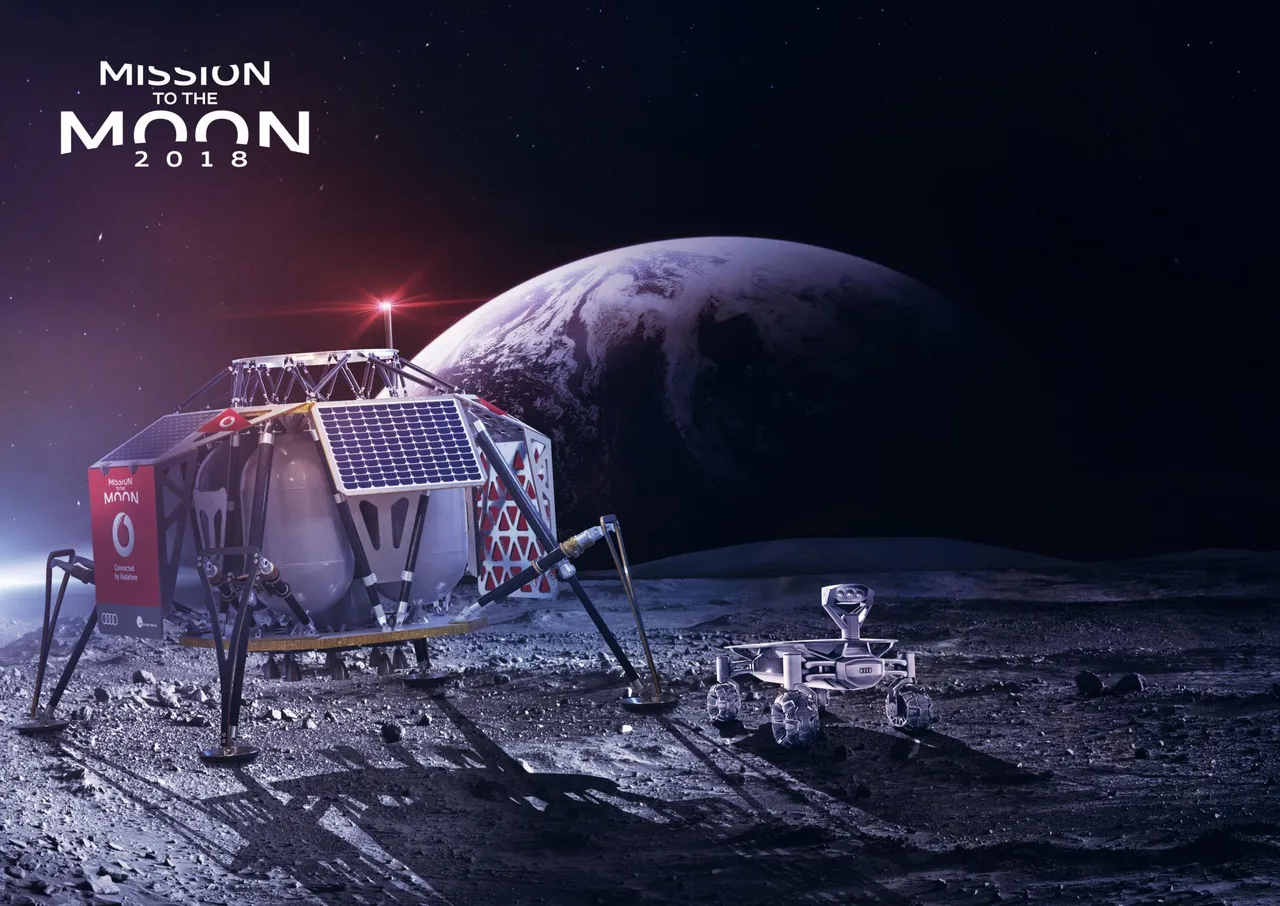Partnering with Spanish telecom giants Vodaphone, German StartUp PTScientists (short for Part Time Scientists) aims to build the world’s first LTE base-station on the moon. The company has been well known in the commercial space sector for a while following its earlier partnership with Audi to develop a Lunar-rover to compete in the Google Lunar XPRIZE. After conceding that they won’t make the deadline of reaching the Moon by the end of 2017, PTScientists have looked into other options. Following the unveiling of their new partnership with Vodaphone, it seems like bringing connectivity to the Lunar surface is the next goal.

PTscientists and Vodaphone plan to land a lander on the moon capable of providing 4G LTE connectivity for future Lunar projects. To the right is the rover already developed in partnership with Audi. Image source
According to Vodaphone CEO Hannes Ametsreiter, the aim is for their Lunar LTE station to become a cornerstone in many future Moon missions an official News release by Vodaphone reads. Should the project be successful, it would become the first German landing on the Moon, and most likely also the first commercial mission to the moon (although other companies are still in the race for the Google Lunar XPRIZE this year, it seems increasingly unlikely to happen in 2017).
But is this a good idea? Well, a strong business case can be made for setting up supportive infrastructures on the Moon, as there are many different reasons why some might want to go there. Setting up a lunar base can help facilitate science experiments in an otherwise unobtainable environment. Telescopes can be built on the moon that, thanks to the lack of an atmosphere, can see further and clearer than an Earth-based telescope. Tourism to the Moon’s surface is also likely to happen at some point, although it is more of long term prospect.
What all future lunar projects have in common though is the need to be able to communicate back to Earth. Today, rovers on Mars or the Moon need to completely stop in order to transmit signals back to the Earth due to technical limitations and a very scarce energy budget. Having a permanent LTE Tower for communications on the Moon will also lower the requirement for other Moon missions to carry advanced senders and receivers. This because there will be a much shorter distance to the local lunar LTE-station, which by having a larger transmitter and locally installed solar panels with a tailored energy budget for communications, can then specialize for one particular task. Other lunar rovers or infrastructures can then spend their limited electricity and mass and time more efficiently.

Image of the Lunar lander-prototype by PTScientists and Vodaphone. Image source
With access to this infrastructure, costs can be reduced across the board, or more advanced scientific equipment can be carried instead. Thus, there is certainly a willingness to pay both from agencies looking to do science on the moon, or for companies as the service allows for scarce funds to be allocated elsewhere.
If you ask me, it is very likely that we will have more than 10 private companies and space agencies working with different infrastructures on the Moon already in the next decade. With SpaceX looking to send two anonymous space tourists to orbit the Moon already next year, it seems like mankind is finally ready to return to its most nearby cosmic neighbor. And as rocket reusability becomes the new standard, more projects will become viable.

PTScientists Lunar Rover in collaboration with Audia initially planned to compete in the Google Lunar XPRIZE. Image source
In any case, it is a very exciting project for a number of reasons. 1. It is more than a “one-off” lunar mission as building an LTE-station would be part of a scalable Lunar program supporting further commercial developments. 2. There has been a lot of talk about getting more collaboration between big non-space companies and the space sector. The commitment shown by Vodaphone sends a clear signal that Space is no-longer a niche for Agencies and dreamers. 3. The access to an advanced telecom network on the moon greatly enhances the opportunities for other commercial space projects on the Moon through lowering costs and opening up the possibilities for higher quality data streaming, such as HD video.
So what do you think Steemers? Will we see the first private companies working on the Moon already next year?